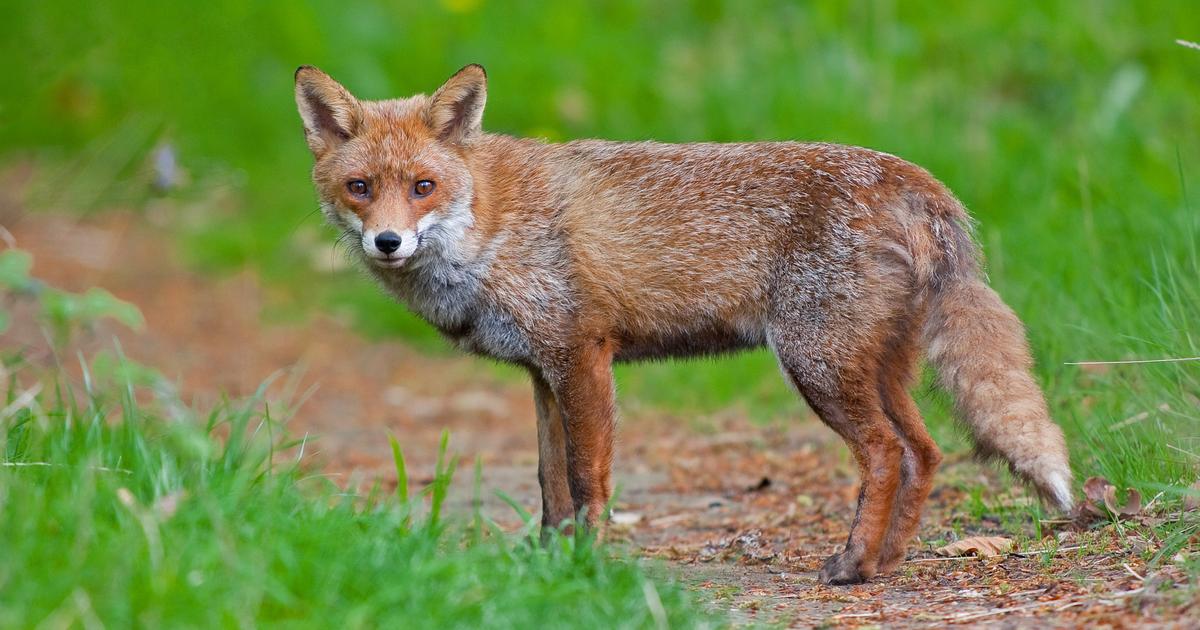Wild animals in winter: the clever survival strategies of foxes, rabbits & co.
Created: 12/29/2022, 12:00 p.m
By: Nina Marie Jarosch
Wild animals are at the mercy of the freezing temperatures in winter.
However, every animal species has its clever strategies for surviving the cold season.
When winter covers everything outside with snow and ice and we humans snuggle up in our comfortably warm beds, wild animals such as foxes, rabbits and the like are completely at the mercy of the weather.
But every animal species has its own clever survival strategy to get through the winter safely.
We reveal why laziness pays, cold feet are good and who uses antifreeze.
Wild animals in winter: the clever survival strategies of foxes, rabbits & co.
A thick coat keeps foxes, hares, wild boar and red deer warm in winter.
The fur at this time of year is particularly long, dense and has hair with a wavy sheep structure.
Cold-repellent wool hair insulates under the top coat with air cushions, like warming thermal underwear.
With a particularly thick fur, the otter can also defy the cold.
He has 50,000 hairs about the size of a thumbnail.
This is how the cold season can be endured.
In addition, the wild animals have eaten up a thick layer of blubber before winter so that they can feed on it if necessary.
The fur of foxes is particularly dense in winter and protects them well from the cold.
(Iconic image) © Design Pics Editorial/Imago
Wild animals in winter: A good dose of grease
The masters of air insulation are the birds.
They simply fluff up their dense plumage to create an insulating layer with air between the feathers.
Birds and other aquatic wildlife also need a good dose of grease.
Ducks, for example, have a fat gland on their tail for this purpose.
They spread this fat on the plumage with their beak.
This makes it water-repellent and also protects it from cooling down.
Also read how to properly feed wild birds in winter.
Wildlife in winter: antifreeze and hibernation
Instead of fluffing up, mosquitoes have a completely different strategy - they shrink!
“In return, they excrete excess body fluid.
A sugar is incorporated into the remaining liquid, which acts like an antifreeze,” explains Eva Goris, spokeswoman for the German Wildlife Foundation.
When the temperature drops, insects then crawl into small cracks in the wood, under the ground or in piles of leaves.
There they fall into a kind of hibernation, from which they only wake up again when it gets warmer.
You can find even more exciting animal topics in the free newsletter from Landtiere.de, which you can subscribe to right here.
Wild animals in winter: The trick with cold feet
Cold feet are important for waterfowl in winter.
If they had warm feet, they would first thaw the ice they are standing on and then let it freeze solid in the meltwater.
Their trick is a very special cycle in which only a small amount of blood flows from the body to the bird's feet.
On the way down into the feet, the blood cools down from around 40 degrees to six degrees.
This means that waterfowl can easily stand on frozen ponds with their cold feet without freezing.
Wild animals in winter: Stomach reduction and energy savers
As soon as the temperatures drop, energy saving is announced for the red deer.
As a herbivore, it finds little to eat in winter, so any form of activity must be carefully considered to avoid wasting calories unnecessarily.
One of his strategies is stomach reduction.
His rumen now holds only half as much food as it did in summer.
He also slows down his metabolism and, if possible, stays still in the landscape.
This makes the red deer the ideal energy saver in winter.
Wild animals in winter: difference between hibernation and hibernation
Hibernation and hibernation are not the same.
Animals that hibernate literally sleep through the cold season and put their body temperature and all bodily functions on the back burner.
According to
Nabu
(Bund Naturschutz), real hibernators are small mammals such as bats, dormice, hamsters and marmots.
During hibernation, the body temperature is not lowered, but there is a lot of slumber and rest.
Once a day the animals go in search of food.
Badgers, squirrels, raccoons and brown bears hibernate.







/cloudfront-eu-central-1.images.arcpublishing.com/prisa/DXPUIGHRZZEKNMVHLDNKFJFAMY.jpg)





